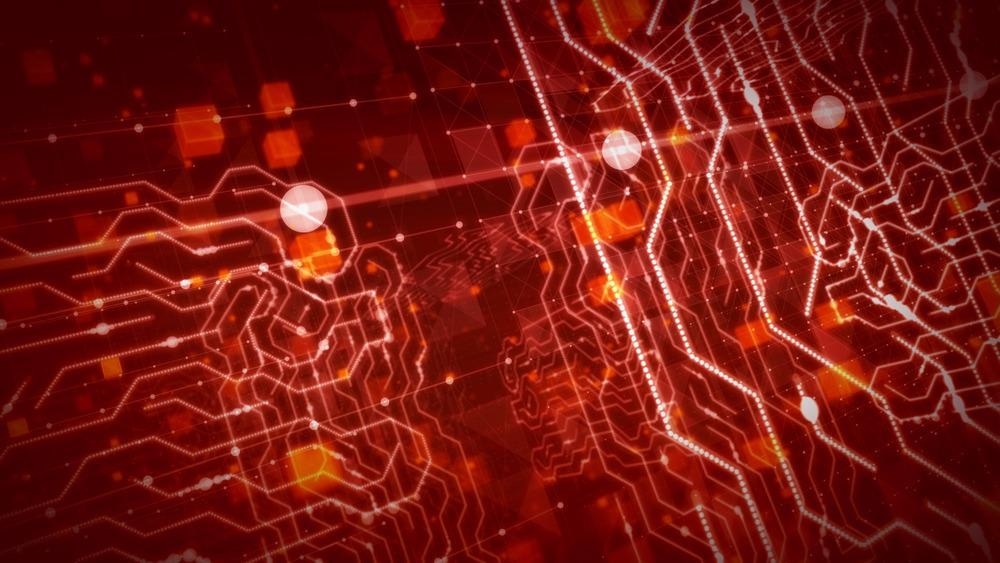Although two-dimensional (2D) chalcogenide semiconductors were recognized as host materials for the emission of single photons, the lithography-free approach remains unexplored. In an article recently published in the journal ACS Nano, researchers demonstrated a scalable, bottom-up, and lithography-free approach toward creating large areas of dense localized emitters in a tungsten diselenide (WSe2) monolayer.

Study: High-Density, Localized Quantum Emitters in Strained 2D Semiconductors. Image Credit: klss/Shutterstock.com
Here, they placed the WSe2 monolayer over platinum (Pt) nanoparticles induced strain inside the WSe2 monolayer.
Quantum Emitters
Physical confinement and strain engineering of three-dimensional (3D) semiconductors allowed quantum information processing and bandgap engineering. Semiconducting transition metal dichalcogenides (TMDCs) and hexagonal boron nitrides are two-dimensional (2D) materials explored for the aforementioned studies.
The structural properties of 2D materials make them a competitive platform for strain engineering. The heterointegration of 2D materials with arbitrary substrates containing optical/photonic nanostructures is due to their in-plane bonding, suggesting the strain tunability of the 2D materials through substrate topography. Moreover, Si-based nanopillars serve as 3D substrates to induce localized strains.
Since mechanical strains can control the band structures, they are used to tune photonic and electronic performance. Hence, quantum emitter (QE) identification in TMDCs has received considerable attention in quantum information science and engineering and 2D nanophotonics. Although TMDCs have intriguing properties, their quantum emission's origin is still unclear.
Quantum Emitters in Strained 2D Semiconductors
In the present work, the authors demonstrated a method to form highly dense, strain-induced quantum emitters in a 2D TMDC monolayer, placed on the top of a uniform arrangement of metal nanoparticles using a lithography-free, top-down approach with aluminum oxide (AlOx) dielectric layers. By using far-field photoluminescence (PL) spectroscopy, they observed localized exciton (LX) emission from the platinum strained WSe2 structures.
The team understood the mechanism behind the LX emission from strained WSe2 through combined studies of room-temperature near-field and low-temperature far-field PL spectroscopy. They observed that the origin of the LX emission was from the dark exciton's radiative emission, controlled by compressive strain. An identical LX emission observed in WSe2 monolayer's large area was grown by metal organic chemical deposition (MOCVD). Moreover, MOCVD was spatially controlled using platinum nanoparticles arranged in a lithographically patterned array. Time-resolved and cryogenic PL measurements suggested a lifetime of approximately 11 nanoseconds with less than 0.7-nanometer emission spectral line widths.
Research Findings
Firstly, a thin AlOx was deposited on a uniform array of platinum nanoparticles, spread over a silica (SiO2)/silicon (Si) substrate with the help of self-patterned diblock copolymer micelles. The platinum nanoparticles were spin-coated with a single layer of polystyrene-block-poly(4-vinylpyridine) (PS-P4VP) micelles, and the platinum nanoparticle core consisted of hexachloroplatinic acid (H2PtCl6) precursor. Later, the nanoparticles were annealed at 400 degrees Celsius. Based on the diblock copolymer molecular weight, platinum nanoparticles' sizes were 11.7 and 5.9 nanometers.
The nanoparticles of size 11.7 nanometers with an interparticle distance of 103 nanometers were used for further investigation. The AlOx layer was deposited on the platinum nanoparticles via atomic layer deposition (ALD) and was used as a spacer, which prevented the quenching of excitons in 2D TMDCs via direct contact with platinum nanoparticles. Moreover, thicker AlOx resulted in height differences between the substrate and the top of platinum nanoparticles.
After ALD AlOx deposition, WSe2 monolayers were transferred onto the AlOx-deposited platinum nanoparticle arrays by either a pick-up method in exfoliated crystals or by wet-transfer technique in MOCVD-grown films. Finally, annealing the synthesized samples with argon flow in a vacuum tube furnace made a better conformal contact at the interface between AlOx/platinum nanoparticles substrate and WSe2 and eliminated the trapped gas molecules or solvents.
Atomic force microscopy (AFM) and scanning transmission electron microscopy (STEM) studies revealed the structure of annealed, locally strained WSe2 on AlOx/platinum nanoparticle arrays. The results showed visible wrinkles between the nanoparticles, suggesting the strain and deformation in the WSe2 monolayer. STEM images and energy-dispersive X-ray spectroscopic (EDS) elemental mapping revealed that the WSe2 monolayer to the AlOx-covered platinum nanoparticles array, suggesting the creation of locally strained structures.
Conclusion
In conclusion, the team demonstrated a facile approach for fabricating localized quantum emitters with high spatial density, induced by strain, in a WSe2 monolayer distributed on uniform platinum nanoparticles. The LX at room temperature was red and shifted from neutral excitons and trions, revealed by the strained WSe2.
A comprehensive strain was induced by the sample topography and density of platinum nanoparticles and LX emission by tuning dark excitons.
The present work is devoid of top-down lithography, scalable to large area TMDCs, and applicable to 2D semiconductors. Moreover, the structure of the present study allowed the observation of quantum emission at low temperatures, which can be actively tuned by the gate voltage and passively tuned by platinum nanoparticles.
Reference
Kim, G., Kim, H. M., Kumar, P., Rahaman, M., Stevens, C. E., Jeon, J., and Jariwala, D. (2022). High-Density, Localized Quantum Emitters in Strained 2D Semiconductors. ACS nano. https://pubs.acs.org/doi/abs/10.1021/acsnano.2c02974
Disclaimer: The views expressed here are those of the author expressed in their private capacity and do not necessarily represent the views of AZoM.com Limited T/A AZoNetwork the owner and operator of this website. This disclaimer forms part of the Terms and conditions of use of this website.